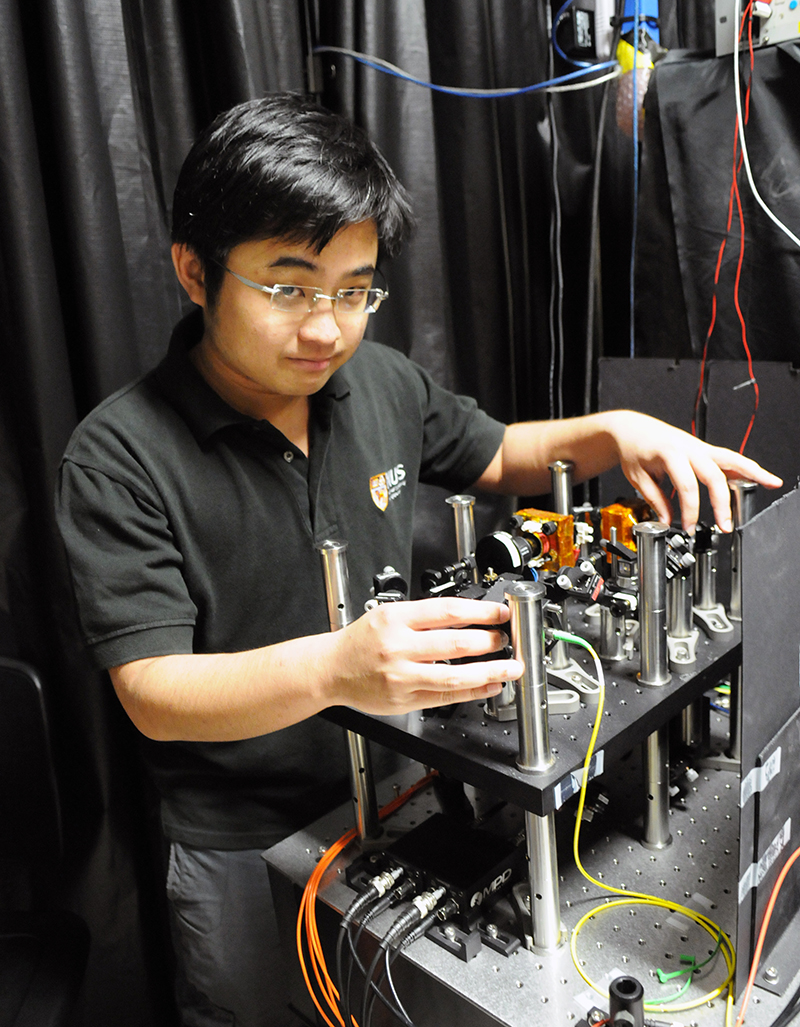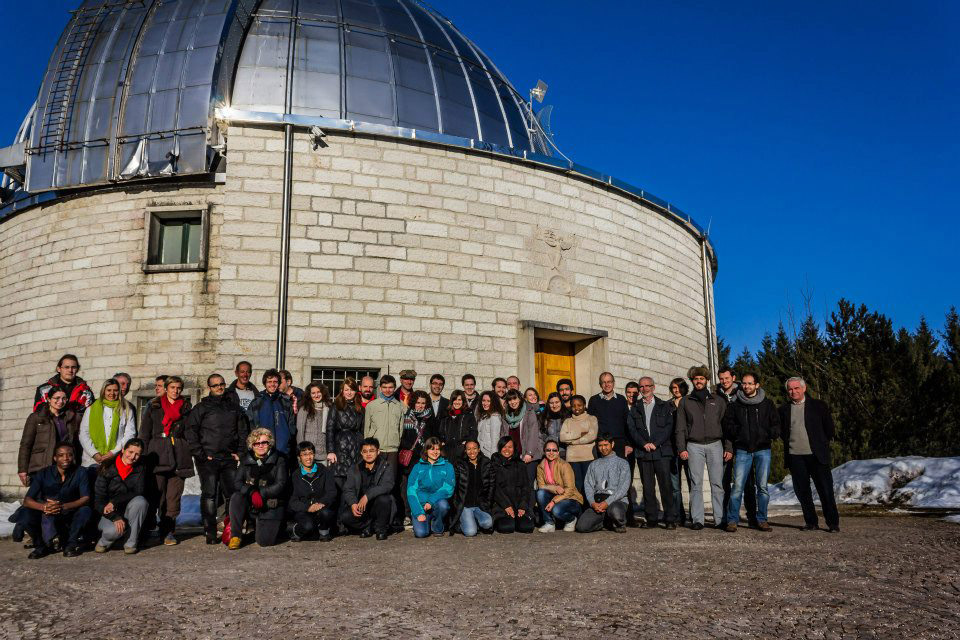Highlights
Meet a CQTian: Tan Peng Kian

Tan Peng Kian works in a quantum optics lab on a project motivated by measuring the size of exoplanets. The interview explains.
Who are you?
I'm Peng Kian, age 29. I'm currently a research assistant and PhD student in Christian Kurtsiefer's experimental quantum optics group. I'm from Singapore and I did my degree in physics at NUS.
What is your PhD about?
My project is on the Hanbury–Brown and Twiss (HBT) experiment, which is a stellar intensity interferometry measurement. It looks at the coincidence of photons from starlight at two telescopes, measuring how closely they tend to move together in terms of spatial and temporal coherence. From this we can calculate the angular diameter of the star, and the motivation for that is to be able to deduce the size of the planets that orbit around them.
How so?
The method used by NASA's Kepler space telescope to detect exoplanets, for example, is to see that when the planet passes in front of the star the luminosity drops. From this they know the size ratio of the star to planet, but unless you can measure the stellar size, you have to make a lot of assumptions to estimate the size of the planet and you end up with 'astronomical' error bars.
It all sounds very astronomical. Why are you in a quantum optics group?
The motivation for doing this is astronomy but the method is in quantum optics. I have two supervisors, Christian for the quantum optics and Professor Phil Chan for the astronomy side.
The HBT experiment was first done in the 1950s, but back then they were not using photon counters. One of the problems is that for starlight, the coherence time scale over which photons tend to bunch together is on the order of ten femtoseconds. No detectors around at the moment can resolve this. One of the things we are trying to do is filter the light to about two picometer bandwidth, when we should expect photon pairs within half a nanosecond. Our photon detectors should then be able to explicitly measure the HBT effect.
How do you do the filtering?
What I'm trying to do is stack multiple filters. First I start with a diffraction grating, which will select the bandwidth to be about 0.2 nanometers. Then I add pieces of glass with a partial reflective coating that function as an optical cavity, meaning only certain wavelengths can get through. I aim to stack multiple of these until effectively only a specific wavelength two picometers wide survives.

Peng Kian struck up a collaboration with astronomers at the Asiago Observatory in Italy after meeting them at a conference.
Is it going well?
There is progress. At conferences, I've come into contact with two groups doing this kind of astronomy. One group, at the Asiago Observatory in Italy, invited me to a winter school last year and the Director there has assigned a PhD student to work with me. The idea is that he'll teach me astronomy and I'll teach him quantum optics. If and when this filtering setup works, and I've designed it to be portable, hopefully we can move it to their observatory, hook it up, and maybe we can have some new results.
As well as your research, you do lots of outreach. What do you enjoy about this?
Over the years I have mentored multiple projects on radio telescopes, liquid mirror telescopes, the physics of musical instruments, and now we are starting something on canoeing, badminton. I enjoy sparring – mentally – with the students. Also, I don't like the idea of bookworm-style studying in physics. I believe that to understand something one must be able to convey it and teach it properly.
I started doing outreach when I was an undergraduate, and it's mostly with my alma mater school, Hwa Chong. When I was a high school student there, Prof Phil Chan mentored my high school project.
So you were interested in science and astronomy at school?
When I was in primary school, I somehow caught onto Star Trek. Every Wednesday 2am I would be sitting in front of the TV to watch it, so I ended up liking space.
When I was in high school I was known to be a space enthusiast. I was selected by the National Youth Council to go to a space camp in the US when I was in Sec 1 (about 13). My father bought me my first telescope, a 5-inch Schmidt–Cassegrain, after that. I dedicated my honours thesis to Star Trek!
Is there anything else about you that might surprise us?
It's totally unrelated to physics: I actually used to be a working amateur in theatre, and at some point in time I almost considered quitting my undergraduate degree to pursue theatre full time. I have been hired to work as stage manager, head of staging, props master, lighting operator, crew. I have worked in, I think, most of the major theatre venues in Singapore, and for directors like Kuo Pao Kun, Jianhong and Jack Neo.
This came about because when I was in high school, although I was very into astronomy, somehow I was kicked into Chinese drama. I stopped theatre when I started my final year project, because the time and attention demanded were too different. The reality is that I can work in physics and have theatre as a hobby, but it's unlikely that I can work in theatre and have physics as a hobby.






